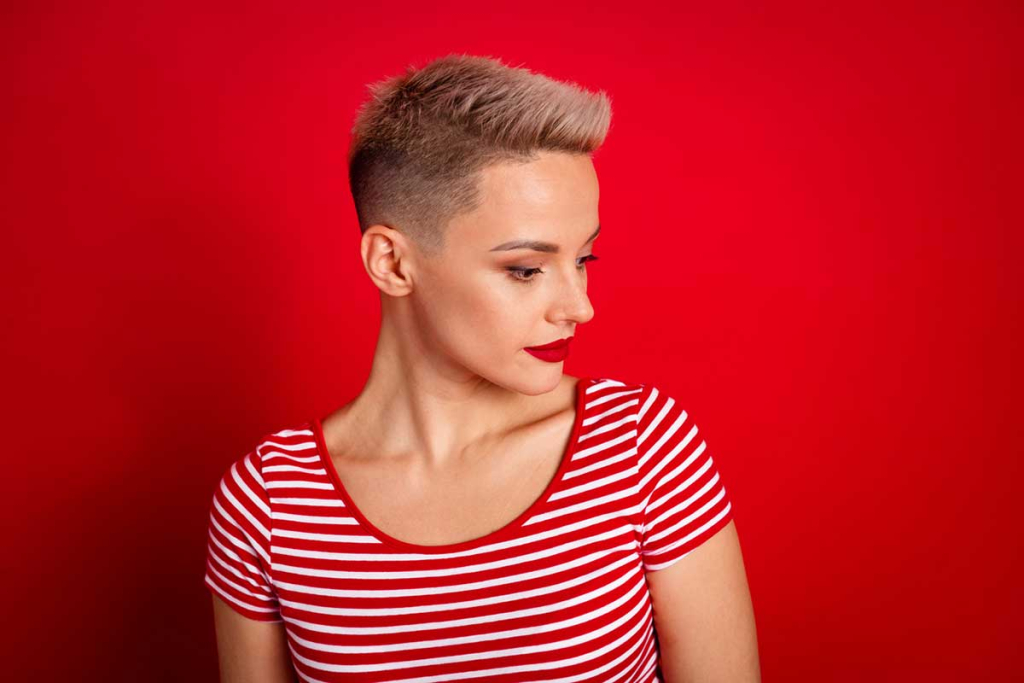The Low Fade Haircut: 2025’s Most Versatile Women’s Style

If there’s one haircut dominating fashion runways, style blogs, and city sidewalks in 2025, it’s the low fade—for women.
Once thought of as a strictly masculine style, the low fade has been fully reimagined, embraced by trendsetters like Zoe Kravitz, Willow Smith, and Rihanna. Sleek, edgy, and surprisingly adaptable, it’s the go-to cut for women looking to blend boldness with elegance. But what exactly makes this style so sought-after right now? What Is a Low Fade (for Women)? A low fade is defined by its gradual tapering of hair, starting just above the ears and curving down to the nape of the neck. The result? A smooth, subtle contrast between shorter sides and a longer top—without the intensity of a skin fade. It’s edgy without being extreme.
Whether paired with natural curls, a polished pixie, or bold buzzed art, the low fade adds structure and modernity. It enhances facial features, creates shape, and works across aesthetics—from ultra-feminine to effortlessly androgynous. Why It’s 2025’s Most Talked-About Cut The low fade is having a moment for one big reason: versatility. This year’s beauty trends are all about individuality, simplicity, and statement-making shapes.
The low fade delivers all three. It’s flattering, low-maintenance, and looks equally stunning with minimalist makeup or full glam. It’s also incredibly empowering—many women report that rocking a low fade feels like reclaiming personal style and confidence on their own terms. It breaks conventions while staying wearable, which is why it’s trending across all age groups, hair textures, and style identities. Will a Low Fade Suit Your Face Shape? Yes—and here’s how to make it work even better for your unique features: – Round Faces: Add volume or texture on top to create length and structure. – Oval Faces: Lucky you—virtually any fade variation will suit your face beautifully. – Square Faces: A soft, layered top can balance strong jawlines and sharp angles. – Heart-Shaped Faces: Keep the sides short but tapered gently to enhance your natural contours. Need inspiration? Search by face shape or hair type on platforms like Book of Barbering or Instagram to find examples that match your vision.
How to Ask Your Stylist (And What to Bring) Before heading to your appointment, come prepared. Here’s how to communicate your low fade goals clearly: – Say “Low Fade” Clearly: Specify that you want the fade to start just above the ears for a subtle transition. – Discuss Length on Top: Decide whether you want a longer top to style, or a close crop for minimalism. – Mention Style Preferences: Are you after something soft and feminine or sharp and bold? Tell your stylist upfront. – Bring Visuals: Show at least 2–3 reference photos from different angles (front, side, and back). It makes a huge difference. Styling & Maintenance Tips The low fade might be low-effort, but it still deserves a little love to look its best. Here’s your essential guide: Products to Consider: – Styling Cream or Pomade: Keeps things sleek or sculpted, depending on your vibe. – Texturizing Spray or Sea Salt Mist: Great for adding volume or enhancing waves. – Edge Control Gel: Keeps lines sharp and baby hairs tamed. Routine: Wash every 2–3 days or as needed for your hair type.
Use a microfiber towel or air-dry to reduce breakage. Apply the product while damp and shape it with your fingers or a brush. Schedule trims every 3–4 weeks to keep the fade fresh and clean. FAQ – Can I do a low fade on natural or curly hair? Absolutely. A low fade enhances curl patterns and keeps sides neat while letting the top shine. – Will I need to style it every day? Only if you want to. A quick touch of product is all it takes—many women find it freeing compared to longer styles. – Can I grow it out easily? Yes! The low fade grows out gracefully. Ask your stylist about transition cuts if you plan to make changes later. Final Thoughts The low fade isn’t just for men anymore—and in 2025, it’s one of the most empowering, customizable styles a woman can choose. Whether you’re going for bold rebellion, effortless chic, or something in between, the low fade is a standout choice.












